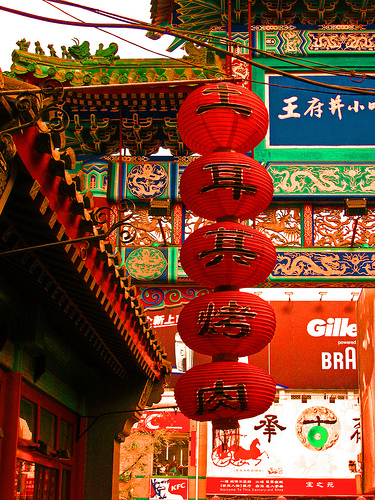
No doubt the elephant in the room at last week’s U.S.-China Strategic and Economic Dialogue was the dramatic shift in economic momentum between the two powers: the most recent economic reports from each nation confirm that China’s economy grew by a startling 7.9 percent in the second quarter of 2009, while the American economy has contracted by 1 percent.
To some, these numbers are a sure sign that the U.S. is slipping from its perch atop the global economy. But aggregate macroeconomics is an incomplete lens through which to assess China’s potential displacement of the U.S. as the world’s economic superstar. A society can truly be said to be the world’s most prosperous when it becomes an international destination for those seeking a better life, not just a favorite of economists and investors. And by that metric, at least, the U.S. still retains its clout.
Consider the statistics surrounding Chinese migration to the U.S. According to the Department of Homeland Security, in 2008 Chinese immigrants comprised the second-largest proportion of legal permanent residents flowing into the U.S. (7.3 percent) and almost one-quarter of asylum seekers in 2008 – more than 3.3 times as much as Colombia, the next largest source nation.
The reality behind these numbers – particularly the large number of asylum-seekers – speaks to the fact that it takes more than a growing GDP to ensure the socioeconomic and political conditions we associate with a high quality of life. In The Snakehead: An Epic Tale of the Chinatown Underworld and the American Dream, author Patrick Radden Keefe confirms as much: chronicling the story of the snakehead, a human smuggling ring run out of New York City, Keefe shows that migrants from China’s Fujianese province are willing to risk life and limb – and pay thousands of dollars – to pile into a cramped, leaky boat and sail to the U.S.
Importantly, these dramatic escapes became increasingly common during the 1980s and 1990s, a period of economic transformation in China. Indeed, the snakehead trade had grown into a $3.5 billion a year industry by the mid-1990s. According to Keefe’s research, the immigrants’ motivations lay beyond simplistic measurements: they came for the opportunity to earn incomes in U.S. currency, for freedom from political corruption and repression, and to escape China’s one-child policy.
Economic growth is not likely to affect these motivating factors any time soon. Though China is making moves to internationalize its currency through measures such as currency swap agreements with banks, it’s unlikely that the Communist Party will be comfortable loosening its control of capital to the extent necessary for the renminbi to become a reserve currency. Indeed, in an economy such as China’s it is impossible to consider economics independent of politics. For example: consumption in China remains so low that it threatens economic recovery in part because workers do not trust the integrity of the public social security system and thus save for retirement at high rates.
Further, economic growth may in fact hasten the outflow of Chinese to the U.S. Research by Mette Thuno of the University of Copenhagen suggests that economic development increases migration in developing countries by connecting them to global markets as well as increasing inequality, which introduces a sense of “relative deprivation” to those who are left behind and drives them to seek out new lives abroad. Perhaps ominously then, while the Chinese economy has grown, household incomes have steadily declined as a share of national income, meaning families are seeing less and less of China’s economic boom.
Lastly, China’s one-child policy, another impetus for many asylum seekers, is actually an important part of China’s economic growth strategy in that it helps to maintain manageable population levels. Thus government officials insist that the policy will remain in place for at least another decade, despite protests from Chinese citizens – which means it will remain a motivation for people to leave China.
For these reasons, the U.S. will retain much of its economic standing in the global imagination, even if China beats it out in certain raw metrics. While observers may laud China’s GDP gains, the average Chinese citizen may well continue to praise people like Sister Ping, the colorful New York-based smuggler who is both the central character in Keefe’s account and – as noted by author Alex Kotlowitz – a Harriet Tubman folk hero among certain Chinese populations.
— Niko Karvounis


2 comments on “Guest Post by Niko Karvounis: What Does China’s Economic Growth Mean for Emigration?”